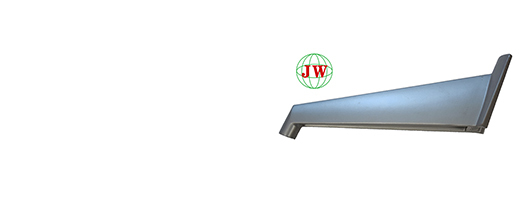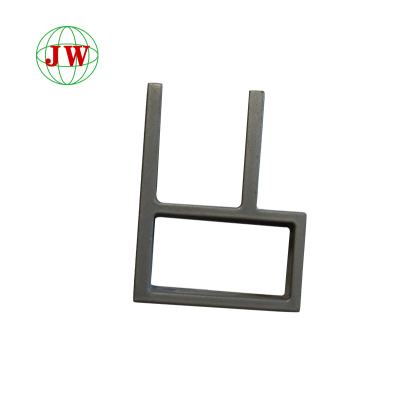
Global Die-Casting Industry Booms: Aluminum Die-Castings and Die-Casting Molds Drive EV-Driven Growth in 2025
2025-09-08 16:39
The global die-casting sector is entering a golden era of expansion in 2025, fueled by surging demand for aluminum die-castingsin electric vehicles (EVs) and technological leaps in die-casting molds. Market data from Mordor Intelligence reveals the industry is projected to hit $88.03 billion in 2025, with a 6.24% CAGR driving it to $119.14 billion by 2030. This growth is not just numerical—it reflects a fundamental shift in manufacturing, where aluminum die-castings and advanced die-casting moldshave become linchpins of lightweight, high-efficiency production across key sectors.
EVs Propel Aluminum Die-Castings to Center Stage
The automotive industry, particularly EVs, is the primary catalyst for aluminum die-castings demand. Unlike traditional combustion engine vehicles, EVs rely on lightweight materials to extend battery range, and aluminum—with its optimal strength-to-weight ratio—has emerged as the material of choice. Industry figures show EVs use 25-27% more aluminum by weight than fuel-powered cars, averaging 250kg per vehicle. This trend has transformed how automakers design critical components: Tesla, for example, uses aluminum die-castings for the Model Y’s front and rear underbody via its 9,000-ton Giga Press, slashing manufacturing costs by 40% and reducing body weight by 10%.
Beyond Tesla, major players like General Motors (GM) are doubling down on aluminum die-castings. In 2023, GM invested $55 million specifically in EV aluminum die-casting components as part of a $918 million manufacturing upgrade, signaling long-term commitment to the technology. The shift is not limited to passenger cars: commercial EV manufacturers are also adopting large-format aluminum die-castings for battery housings and chassis parts, as these components require both structural integrity and lightweight properties—two strengths of die-cast aluminum.
Die-Casting Molds Innovate: Materials, AI, and Automation
To keep pace with the demand for complex aluminum die-castings, die-casting molds—the backbone of production—are undergoing rapid innovation. A key breakthrough is in mold materials: traditional H13 tool steel, once the industry standard, now struggles to meet the high-temperature demands of large EV components (which often involve molten aluminum at 700°C+). In response, 2025 has seen widespread adoption of ceramic-coated mold steel, which extends mold service life to over 80,000 cycles—60% longer than H13 steel—and resists wear during high-volume production.
AI and automation are also reshaping die-casting mold design and production. KUKA Robotics, a leader in industrial automation, partnered with die-casting firms in early 2025 to launch AI-driven quality control systems for molds. These systems use real-time sensor data to detect defects during casting, boosting production efficiency by 30% and cutting defect rates by 20%. Meanwhile, companies like Dongguan E-An Technology have developed AI-powered mold design platforms: input basic aluminum die-casting parameters, and the system generates 3-5 optimized mold schemes in days—down from the 2 months required for traditional, experience-based design.
Regional players are contributing to this innovation wave too. In the U.S., Fall River Die Cast Co. (formerly Rheo Cast Co.) is investing in AI-integrated die-casting molds as part of its 2025 rebranding. The company plans to install a 1,200-ton Yizumi-HPM Leap die-casting cell, which uses AI-based production profiles to optimize casting shots—ensuring consistent quality for aluminum die-castings like fluid-meter housings and lighting fixtures. “We’re building the foundation for the next 50 years of growth,” says Charlie Wright Jr., Fall River’s Chairman, emphasizing how AI-enhanced die-casting molds will keep the firm competitive in North America’s EV supply chain.
Sustainability: A New Imperative for Die-Casting Molds and Components
Sustainability has become a non-negotiable factor in the die-casting industry, with die-casting molds and aluminum die-castings at the heart of green initiatives. Globally, 70% of die-casting firms now use mold remanufacturing technology—such as laser cladding to repair worn mold cavities—reducing mold scrap rates by 35% and cutting raw material waste. In Europe, German SMEs supported by the ZIM Innovation Fund have developed mold waste heat recovery systems, converting heat from die-casting molds into electricity; each mold saves 12,000 kWh annually, equivalent to powering 10 average households for a year.
China, the world’s largest die-casting market, is leading policy-driven sustainability efforts. By the end of 2025, the country requires large die-casting mold manufacturers to achieve 100% recycling of mold waste, pushing the industry toward a circular economy model. For aluminum die-castings, this means greater use of recycled aluminum—already 75% of the aluminum used in die-casting is recycled, with EV makers like Tesla aiming to hit 100% by 2030.
Outlook: Aluminum Die-Castings and Molds to Define Manufacturing’s Future
Looking ahead, the synergy between aluminum die-castings and die-casting molds will deepen as EV adoption accelerates. The automotive metal die-casting market alone is set to grow from $35 billion in 2024 to $38 billion in 2025, with EV-specific components driving most of this expansion. Innovations like Giga Casting 2.0—capable of producing entire vehicle chassis in one step—will require even larger, more precise die-casting molds, while AI will further shorten development cycles and improve sustainability.
As Charlie Wright Jr. notes, “The die-casting industry is no longer just about making parts—it’s about enabling the next generation of manufacturing.” For businesses, investing in advanced die-casting molds and optimizing aluminum die-casting processes will be key to capturing opportunities in the EV, aerospace, and consumer electronics sectors. For consumers, this means lighter, more efficient vehicles and devices—all made possible by the quiet revolution in aluminum die-castings and die-casting molds
Get the latest price? We'll respond as soon as possible(within 12 hours)












